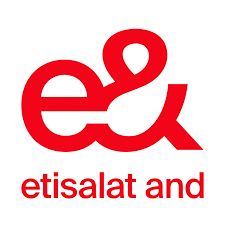Ericsson noted that its AIR 3229 dual-band radio enables e& UAE to deliver 5G services simultaneously on both the 2.6 GHz and 3.5 GHz spectrum layers using a single unit
Ericsson and Emirati-based operator e& UAE have completed what it claims to be one of the world’s first deployments of Ericsson’s dual-band Massive MIMO radio, AIR 3229, on e& UAE’s network.
In a release, the Swedish vendor noted that this new deployment aims to boost network performance, increase network capacity and reduce carbon footprint.
Ericsson noted that its AIR 3229 dual-band radio enables e& UAE to deliver 5G services simultaneously on both the 2.6 GHz and 3.5 GHz spectrum layers using a single unit. This makes it possible to double the number of time division duplex (TDD) carrier components from two to four in high-capacity 5G sites, Ericsson added.
The vendor also highlighted that this solution enhances network performance while addressing challenges related to site acquisition, installation complexity and tower load management. Ericsson’s solution reduces power consumption by 20% and minimizes the tower load by 25%.
Ericsson’s AIR 3229, which is part of the Ericsson Radio System portfolio, is powered by the latest generation of Ericsson Silicon.
Marwan Bin Shakar, SVP of access network development at e& UAE, said: “At e& UAE, we are always looking to adopt solutions that contribute to the evolution of our network while maintaining our sustainability objectives. The introduction of Ericsson’s dual-band Massive MIMO radio supports our efforts to deliver world-class connectivity and enhanced 5G experiences while optimizing energy efficiency and reducing our environmental impact.”
Ekow Nelson, VP and head of Global Customer Unit for e& at Ericsson Middle East and Africa, said: “By integrating advanced technologies into its 5G network, e& UAE is better positioned to meet the growing demand for high-performance, reliable connectivity across the UAE.”
Ericsson and e& UAE have recently signed a Memorandum of Understanding (MoU) for the collaborative exploration of 6G technology, its use cases and future network evolution.
Ericsson noted that the 6G agreement with the Arab telco will serve as an early engagement for defining the next generation of future mobile network evolution. It will also include a series of technical discussions and engagements aimed at jointly exploring key 6G technology concepts, added the vendor.
Last month, e& UAE said it had reached a new record speed of 62 Gbps after it aggregated multiple carriers across high-band and low-band over simplified architecture. The telco said it used “cutting-edge” hardware and “sophisticated” algorithms like MU-MIMO (multi-user, multiple input, multiple output) to achieve this 5G-A record speed.
Ericsson and e& UAE had also recently claimed the successful implementation of Low Latency, Low Loss, Scalable Throughput (L4S), a time-critical communication technology, in a 5G commercial network for the first time in the Middle East and Africa.
The technology was demonstrated through a cloud gaming showcase conducted on e& UAE’s 5G Standalone commercial network on the sidelines of GITEX Global 2024, where L4S resulted in reducing the latency to less than half and perfectly maintaining it within a predefined range, Ericsson said.
The Swedish vendor noted that the introduction of L4S time-critical communication technology marks a significant milestone in e& UAE’s journey towards 5G-Advanced, where it will enable the Arab telco to enrich its 5G capabilities, catering to time-sensitive use cases in industrial control and mobility automation.

